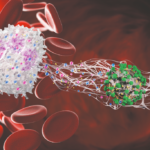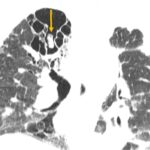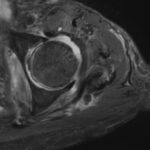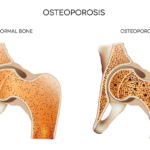An understanding of the mechanisms underlying NET-mediated inflammation will empower clinicians to target therapies that can mitigate disease activity & improve outcomes in patients with lupus.


Katie Robinson |
An understanding of the mechanisms underlying NET-mediated inflammation will empower clinicians to target therapies that can mitigate disease activity & improve outcomes in patients with lupus.

Amanda Moyer, MD, & Tamiko Katsumoto, MD |
In this case report, a patient with voriconazole-induced periostitis exhibits classic symptoms & elevated ALP levels, which quickly resolve following the discontinuation of voriconazole.

Ilana P. Goldberg, MD, & Samuel Faught, MD |
Renal osteodystrophy is associated with chronic kidney disease (CKD) and its associated metabolic derangements, most commonly CKD stages 3–5. It is often subclassified into four histological subtypes, with definite distinctions unable to be made clinically. These four subtypes, which may only be differentiated by bone biopsy, include: osteitis fibrosa cystica, mixed uremic osteodystrophy, osteomalacia and…

Rheumatologists are uniquely positioned to care for patients with sarcoidosis. Here are insights into the condition, its treatment and more.

Gaining trust has a significant effect on disease management and patient care, according to experts at ACR Convergence 2023. Here are insights into the barriers to that trust and how healthcare providers can develop trusting relationships with their patients.

At the 19th Annual Advances in the Diagnosis and Treatment of the Rheumatic Diseases course, Dr. Michelle Petri gave a presentation concerning the overall state of lupus treatment outcomes in the U.S.

The ACR recently released an update on the prevention and treatment of glucocorticoid-induced osteoporosis.1 The guideline, which includes information on the new therapies abaloparatide and romosozumab, emphasizes the importance of shared decision making by patients and clinicians, and also gives information on the importance of sequential therapy after stopping certain osteoporotic prevention therapies. Fracture Prevention…

Discussions between clinicians and their patients about complementary aspects of their care just got easier with the release of the 2022 ACR Guideline for Exercise, Rehabilitation, Diet, and Additional Integrative Interventions for Rheumatoid Arthritis.

In late December, the FDA approved subcutaneous abaloparatide for the treatment of men with osteoporosis at a high risk of fracture. This approval is based on a placebo-controlled study that showed abaloparatide led to significant increases in bone mineral density of the lumbar spine, total hip and femoral neck. Abaloparatide was approved in April 2017 for the treatment of postmenopausal women with osteoporosis at high risk for fracture.

Saud Abaalkhail, MD, Muhammad Umair Javaid, DO, & Amarie Negron Rodriguez, MD |
Systemic autoinflammatory diseases (SAIDs) are rare syndromes characterized by alterations in innate immunity that result in a variety of clinical manifestations that are usually associated with recurrent fevers.1 Thanks to advances in genetic sequencing over the past few years, monogenic causes for some of these autoinflammatory diseases, such as Yao syndrome, have been discovered.2 Previously…